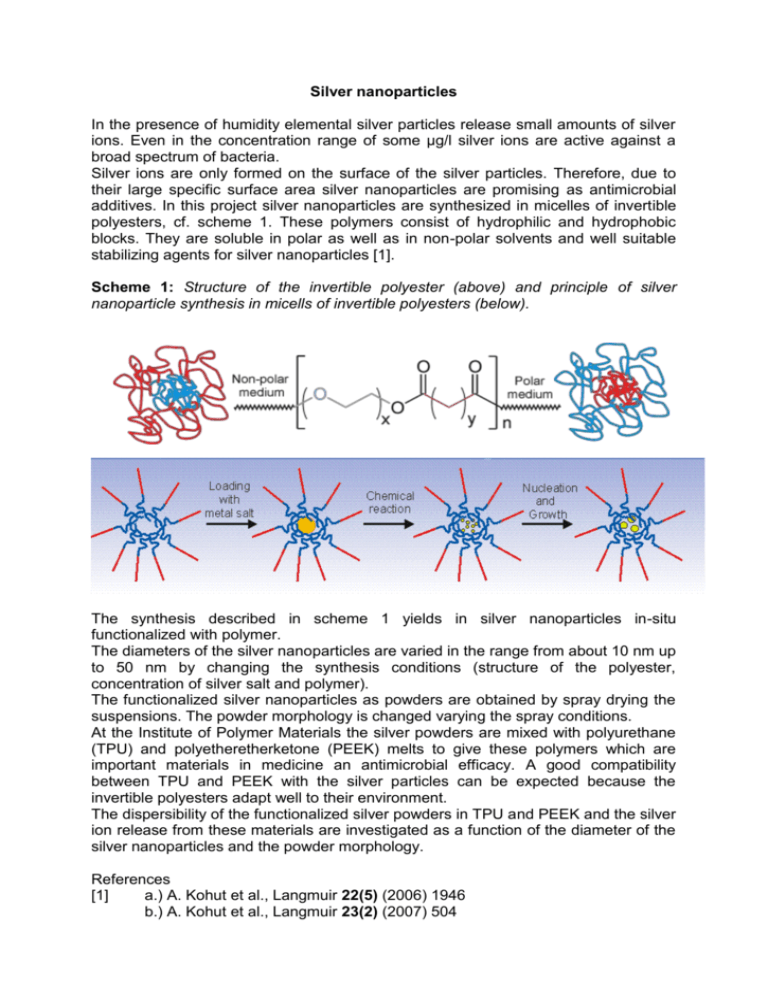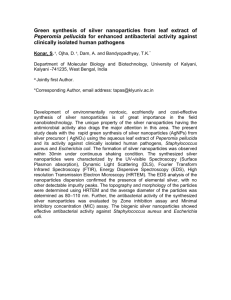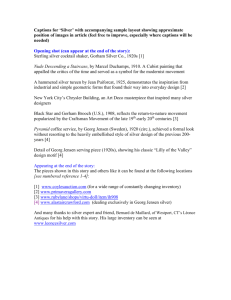Silver nanoparticles
advertisement

Silver nanoparticles In the presence of humidity elemental silver particles release small amounts of silver ions. Even in the concentration range of some µg/l silver ions are active against a broad spectrum of bacteria. Silver ions are only formed on the surface of the silver particles. Therefore, due to their large specific surface area silver nanoparticles are promising as antimicrobial additives. In this project silver nanoparticles are synthesized in micelles of invertible polyesters, cf. scheme 1. These polymers consist of hydrophilic and hydrophobic blocks. They are soluble in polar as well as in non-polar solvents and well suitable stabilizing agents for silver nanoparticles [1]. Scheme 1: Structure of the invertible polyester (above) and principle of silver nanoparticle synthesis in micells of invertible polyesters (below). The synthesis described in scheme 1 yields in silver nanoparticles in-situ functionalized with polymer. The diameters of the silver nanoparticles are varied in the range from about 10 nm up to 50 nm by changing the synthesis conditions (structure of the polyester, concentration of silver salt and polymer). The functionalized silver nanoparticles as powders are obtained by spray drying the suspensions. The powder morphology is changed varying the spray conditions. At the Institute of Polymer Materials the silver powders are mixed with polyurethane (TPU) and polyetheretherketone (PEEK) melts to give these polymers which are important materials in medicine an antimicrobial efficacy. A good compatibility between TPU and PEEK with the silver particles can be expected because the invertible polyesters adapt well to their environment. The dispersibility of the functionalized silver powders in TPU and PEEK and the silver ion release from these materials are investigated as a function of the diameter of the silver nanoparticles and the powder morphology. References [1] a.) A. Kohut et al., Langmuir 22(5) (2006) 1946 b.) A. Kohut et al., Langmuir 23(2) (2007) 504








